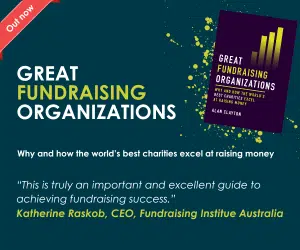US and UK donors 'plan to give the same or less' to charities in 2012

Most donors in the USA and UK plan to give at the same level or to give less in 2012 compared to 2011, according to research in both countries by US communications agency Fenton and public opinion research organisation GlobeScan.
The 2011 Social Good Survey looked at the views of people who had given at least$20/£10.00 to charity in the past year. Conducted in July 2011, the survey suggests that giving has stalled, with 72% of UK respondents and 65% of US respondents saying that they expected their giving to remain the same next year as this. In the UK 16% said they expected to reduce their giving: in the US it was 17%.
Advertisement
Charities are still trusted by many people as instruments of social change, ahead of government and companies. Forty one per cent of UK respondents and 55% of U.S. respondents said that they believed nonprofits and charities are highly effective at bringing about positive social change.
The survey explored which media donors said helped convince them to support a charity. Social media ranked well as a way for existing donors to stay up to date on charities’ activities and opportunities to get involved. But traditional media in the form of news stories and TV commercials were ranked higher than social media as tools likely to attract new people to a cause.
An organisation’s passion for its cause can also encourage people to give: 54% of UK donors and 44% of US donors questioned said that an organisation’s commitment to the cause was the most important factor in their decision to give. “While immediacy and urgency of need is an important concept to communicate, how much the issue or cause resonates on a personal level is clearly the most important driver of engagement and propensity to donate”, is one of the survey report’s conclusions.
Informing donors about expenditure and management seems to produce more supportive donors, but less than half of those surveyed said that they believed nonprofits/charities did a good job spending funds and managing operations.
Rob Anderson, managing director of Fenton’s New York office, commented: “In today’s economic climate, nonprofits and charities must effectively engage people on the impact and timeliness of their work to stand out from the pack and raise the level of trust and support from existing and potential donors.
“These findings confirm that, if they haven’t already, nonprofits and charities must adapt to the age of engagement.”
The survey follows a similar survey in 2010, the Fenton Forecast, which surveyed public views of nonprofit leadership and brands.
GlobeScan used online panels to conduct the survey in the USA and UK, interviewed 1,054 people in the UK and 1,131 in the USA.
www.fenton.com






